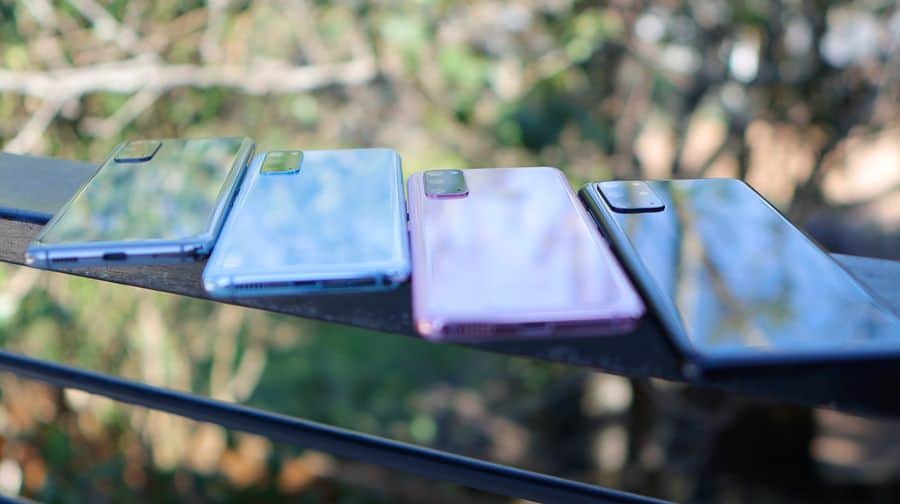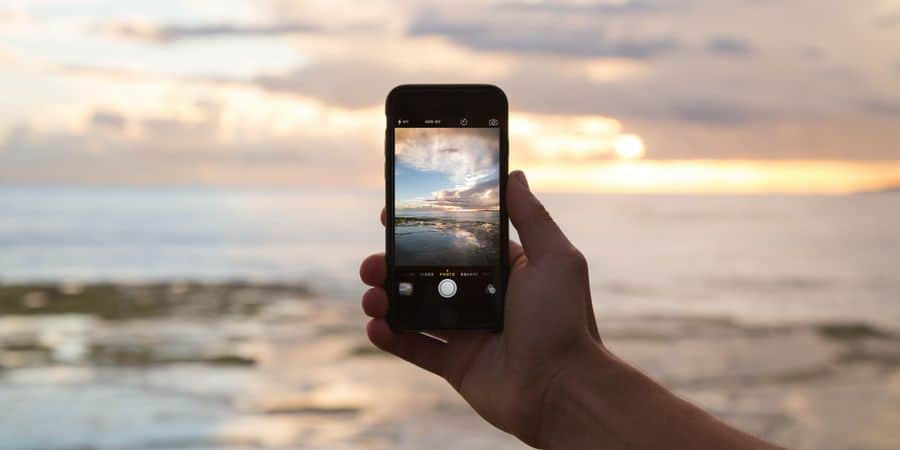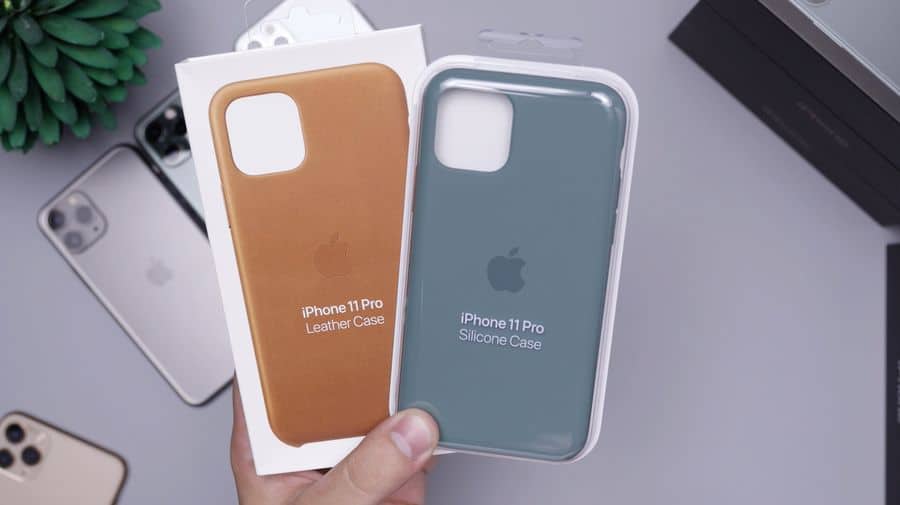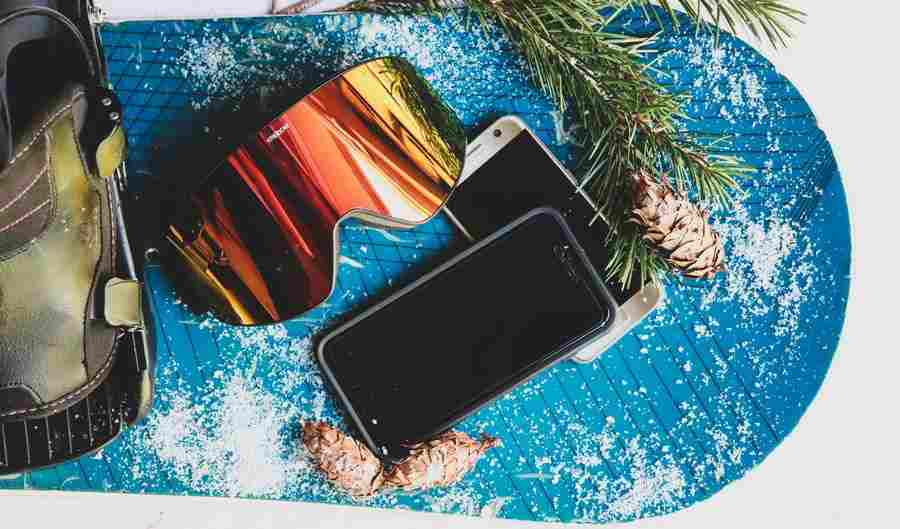
When it comes to smartphones, many people are skeptical about their rising prices. Through the years, the prices of smartphones seemingly increase exponentially, and consumers are wondering if a cheap smartphone would be worth the money saved in the end.
Are cheap smartphones worth it? Unfortunately, no. Cheap smartphones not only lose certain functionalities as you go lower in price, but they also are dated in terms of design and ease of use—something that’s very important to users. On top of that, they can have other issues like bad reception and software update problems.
The remainder of this article will discuss why you should think twice before investing in a lower-priced smartphone, and why expensive smartphones end up being worth their cost.
It’s Not Worth It… Here’s Why
In the modern day, it’s extremely important in many respects to try to keep up with new technology. Every day, technology is developing and changing, and those who do not keep up are often left behind. The following are a few reasons why it’s not always worth going for the older, cheaper smartphone:
Limited Software Updates
As companies evolve their smartphones, they slowly stop creating updates and software that is compatible with their older, cheaper models. Eventually, they stop creating software compatible with that version completely, with few exceptions.
This is the main drawback of cheap smartphones. Lack of software updates means you’re not getting the maximum value out of your phone. Software updates are what enhance your smartphone’s security, patch any bugs or fixes, bring in new features that can be useful, and expand your smartphone’s capabilities. Because companies prioritize software for their more recent smartphones over their older or cheaper models, it is more beneficial to get a more expensive and modern phone.
Poor Camera Quality

Another downfall of the cheap smartphone is the equally cheap camera. This is another feature that’s very important to some customers because of the emotional importance pictures can carry, and people always have their phones with them. This makes their phones the opportune device to capture pictures on, and on cheap smartphones, the quality of the camera is poor, at best.
One of the biggest attractions on newer smartphones is their highly sophisticated cameras, like the Google Pixel 4, which advertises “Studio-like photos. Without the studio,” a bold claim for a bold camera. When compared to a cheaper smartphone’s camera, the difference is obvious, especially in color richness, saturation, and detail. Check out this comparison between pictures taken on a cheap smartphone versus an expensive smartphone to really see the difference for yourself.
Poor Screen & Picture Quality
Cheaper smartphones also tend to have smaller, less vibrant screens. Many new, expensive smartphones boast large edge-to-edge screens with incredible graphic capabilities, like OLED screens for improved contrast between blacks and whites. This OLED technology is what a lot of the best smart TVs use for producing the highest-quality color rendering.
However, cheaper smartphones typically still use LCD screens, which cannot display color on the same level. Although they still can produce decent quality colors, they’re not the most modern or best-looking displays.
Reduction in Size
More expensive smartphones are also usually much bigger than cheaper smartphones, which means you can text, read, and watch videos easier. On a small, cramped screen, all of these things become much harder, and oftentimes people have to adjust the font size just to be able to read messages.
Lack of Other Features
Other features in modern smartphones include facial recognition, touch-ID, “bezel-less” screens (or screens with a very thin frame around them, allowing for optimal screen space), increased memory space and size options, cooling technology to prevent overheating, longer-lasting batteries, and more. These features are often not available in cheaper smartphones.
Fewer Accessories

Many people like to accessorize their smartphones to personalize them, protect them, or add more convenience. The cheaper or older your smartphone is, the fewer accessories you’ll be able to find to fit them. Chargers and headphones for that specific device may be rarer, you may have a hard time finding phone cases that are protective, trendy, and fit your phone, or you might not be able to buy screen protectors and accessories of that nature in the right size.
Harder to Repair
One con of cheap smartphones that most people don’t think about is their reparability. For cheaper or older models, there may not be many parts, if any, out there for people to fix them with. If you break your smartphone, it may not be repairable. This isn’t usually a problem for modern, newer phones whose companies are prioritizing the manufacturing of their parts.
Pros & Cons: Cheap Smartphones vs. Expensive Smartphones

Although it’s often a pretty big price difference, it is more often than not beneficial to buy yourself a more expensive phone. Now, many phone companies offer payment plans for their high-tier phones, and often, there are programs in place to trade in your old phone for a newer one at a reduced price. There are plenty of options on the market to allow you to buy a high-end phone for a great deal.
Now that you’ve learned why cheap smartphones generally aren’t the way to go, it’s time to put them up head to head with expensive smartphones.
Pros & Cons of Cheap Smartphones
The following is a comprehensive list of pros and cons that come with purchasing a cheap smartphone:
Pros:
- They are highly affordable.
- They retain the basic functionalities of a phone, such as calling and messaging,
- You can find some that are relatively higher quality than the others, offering you a closer approximation to a better phone.
- Some people are fonder of old audio jacks, which cheaper smartphones have.
- You have less to lose if it breaks.
The main pro of a cheap smartphone is the price and that you can still use it like any other smartphone. If you search, you could probably find a decent-quality smartphone for a relatively low price, but the cheaper you go, the cheaper the quality. This also goes for functionality. Cheaper smartphones are functional, and a lot of them seem to have a few more perks than those of past years, but it’s sometimes a tossup.
Cons:
- They usually aren’t designed to be waterproof or durable.
- The camera is not high-quality and may not have a front-facing camera
- The phone screens are usually smaller and harder to read.
- Cheap phones have limited memory.
- They are harder to keep secure and up to date because of the lack of software updates.
- The phones have lower-quality screens that typically only render 720p.
- They may not be able to run some mobile games.
- Cheap phones are more prone to overheating.
- They are more prone to connectivity issues, performance issues, and bugs.
- They do not offer the latest features and technology.
- Parts for these phones may not be very common, or available at all, so they may be hard to repair.
The main cons of cheap smartphones are that they are inferior in almost every other way. The camera quality isn’t nearly up to par; they are slower, overheat easier, harder to repair (you may as well just buy a new cheap smartphone), aren’t waterproof, and have worse screen quality. All in all, the cons seem to outweigh the pros.
Pros & Cons for Expensive Smartphones
The following are a list of pros and cons for expensive smartphones:
Pros:
- These phones are typically designed to be waterproof and durable.
- They have advanced cameras, both front-facing and rear-facing.
- There are bigger screen options.
- They offer more memory.
- They are easier to keep secure and up to date, thanks to frequent software updates.
- They have high-quality screens that render many more pixels.
- Expensive phones have more customization options in color and accessories.
- The phones have user interfaces that are optimized for usability.
- They offer the latest features and technology.
- Parts are usually very common, and many places offer repairs for them.
The main pros of expensive smartphones are the extended functionality, all the latest technology features, breath-taking photo quality, advanced screens, more integrated security, and frequent software updates. They also tend to offer much more memory space than any cheap smartphone, which is important when you have a lot of data (especially pictures).
Cons:
- Are expensive
- May not offer a regular audio jack or be compatible with older accessories
- You have more to lose if it breaks (although it might be repairable)
The main cons of expensive smartphones are certainly the upscale prices and the fact that if you break it permanently, you’ve lost a lot of money. However, a smartphone is an investment for yourself, so if you’re careful and protect it, it will probably last you a very long time.
Do More Expensive Smartphones Last Longer?

According to this article on the duration of the typical smartphone’s life, it should last you a minimum of 2-3 years. This supposedly applies to most brands such as Apple or Samsung.
However, different factors affect different phones. Here are a few of the factors that affect the longevity of your phone’s life:
Battery
It goes without saying that battery life varies drastically from phone to phone, and the best-quality batteries are more expensive but last the longest. Not only do they last the longest in terms of daily usage, but also in the long-term. Many things can affect battery life as well, such as temperature and the age of the phone.
An expensive smartphone is almost guaranteed to have a better-quality battery than a cheap smartphone. These superior batteries are more powerful, last longer both short-term and long-term, and benefit from features that are common with expensive smartphones, like temperature-cooling technology.
Keeping Software Updates Current
Software updates are an integral part of smartphones and having frequent updates to fix system bugs and improve the phone are crucial to longer-lasting phones. These software updates prevent crashes and other malfunctions that can cause major frustration for users.
Cheap smartphones will not have as frequent or large updates as an expensive smartphone will, whose manufacturers are always trying to put out new features. If a cheap smartphone gets a software update, it isn’t often, and it isn’t introducing new features. Instead, it will probably fix a simple bug. However, even that is rare because cheap smartphones do not usually receive many software updates.
Physical Phone Damage
Some things will physically disable a phone, like dropping it on the ground and breaking the screen extensively, dropping the phone in water, and getting particles like sand inside parts of the device. Sometimes physical damage can be repaired, but if it’s too extensive, it could easily cut a phone’s life short.
Expensive smartphones are often made to be both waterproof and super durable. Plus, with a wide variety of protective cases and screen protectors you can choose from, it is easy to protect your smartphone, especially if you are relatively careful with it. However, even if it is damaged, it will likely be easy to find a shop that can acquire or already has the parts to fix it.
The same cannot be said for cheap smartphones, which are not made nearly as durable, and most of the time are not waterproof. It is harder to find protective accessories for these cheap phones because companies focus on making more protective accessories for the most popular phones, which tend to be more expensive. Also, it may be hard to find someone who can repair cheap smartphones, as their parts are not as widely produced as other, more expensive, smartphones.
In summary, a more expensive smartphone will last you longer, not only because it is usually superior in all the above-listed ways to a cheap smartphone, but also because of one smartphone universal rule: the older the phone, the slower it is. This occurs because companies that make smartphones give priority to their newer generations rather than their older ones, which then become cheaper and out of date because they give all the newer, fast features and software to the newer, more expensive smartphones. You can click here to find out more reasons as to why phones and other devices slow down over time.
Recommended Cheap Smartphones
If you feel like an expensive smartphone is out of your budget, don’t fret; there are still plenty of good-quality smartphones available at a lower cost.
Based on Techradar’s list of the best cheap phones in the US for 2020, here are seven examples of cheap smartphones from four different price ranges, and a quick summary of the website’s review of the product:
UNDER $600
- OnePlus 7T: At a price of $599, the 7T is on the higher-end spectrum of cheap phones. Techradar rated this phone number one in the under $600 category for its “cutting-edge performance, fantastic cameras” and being the “latest android version.” However, they removed points for the fact there was no expandable storage and no 3.5mm headphone jack.
- Quick Specs: 6.55-inch screen, 1080 x 2400 resolution, 8GB RAM, 128/256 GB storage, front and rear cameras
- iPhone 8: The iPhone 8 is “still a viable iPhone” but now sold at much lower prices than the newer iPhone models because of its “dated design.” New models no longer have a home button like this one still does, and they have edge-to-edge screens, also unlike this model. However, it is still a decent iPhone and only $449 for the 4.7-inch display, or $549 for the 5.5-inch display (also known as the iPhone 8 Plus).
- Quick Specs: 4.7-inch/5.5-inch screen, 750 x 1334 resolution, 2GB RAM, 64/256GB storage, front and rear cameras, fingerprint sensor
UNDER $500
- Samsung Galaxy S9: Samsung’s Galaxy S devices “have been getting some of the biggest and most consistent discounts after their release,” with the S9 being one of the newest. Techradar loved the phone’s “sharp, high-quality AMOLED screen,” but wasn’t a huge fan of the outdated bezel screen or the single rear camera. Coming in at $449.99 pre-owned from Samsung, it’s still a bit on the high range of cheap smartphones.
- Quick Specs: 5.8-inch screen, 1440 x 2960 resolution, 4GB RAM, 64/128/256GB storage, front and rear cameras
UNDER $400
- Honor View 10: Described as “punching well above its weight,” the Honor View 10 is rated highly for the value it offers at the price of $374.06. Techradar loves its long battery life and headphone jack but has a “simple and dated style” and no camera stabilization or water resistance.
- Quick Specs: 5.99-inch screen, 1080 x 2160 resolution, 6GB RAM, 128GB storage, front and rear cameras
- Moto Z3 Play: Although it’s number 5 in their list, the Moto Z3 Play ($229.99) did not impress Techradar. Although they cited its slim frame and the fact that MotoMods can expand its battery and functionality, they say it’s not a very powerful phone, and they recommend the OnePlus 6T as a comparable option.
- Quick Specs: 6.01-inch screen, 1080 x 2160 resolution, 4GB RAM, 32/64GB storage, front and rear cameras
UNDER $200
- Moto G7 Play: An especially cheap phone at a mere $197.99, the Moto G7 Play is said to have a strong battery life by Techradar. However, its display is lacking, and it comes with low base storage.
- Quick Specs: 5.7-inch screen, 720 x 1512 resolution, 2GB RAM, 32GB storage, front and rear cameras
- iPhone SE: Released all the way back in 2016, this old iOS classic is credited with “unrivaled build quality” by Techradar and is said to be “impressively powerful for the price,” although it comes with a very small screen, and is an incredibly dated model by modern terms.
- Quick Specs: 4-inch screen, 640 x 1136 resolution, 2GB RAM, 16/32/64/128GB storage, front and rear cameras, fingerprint sensor
Recommended Expensive Smartphones
This comprehensive list from Techradar of the 15 best phones of 2020 contains some of the top phones this year has to offer – rest assured, they come with all the bells and whistles plus the price tag to match. I will be showing you their top seven, so you can compare them with the cheaper-smartphone list above:
- Samsung Galaxy S20/S20 Plus: Techradar’s number one phone is the Samsung Galaxy S20 at $999, although they prefer the Plus edition at $1,199. They say the specs on this phone are the “latest and greatest,” with incredible camera zoom, very long-lasting battery (can go over a day without charging), an Infinity-O AMOLED screen, and great-quality cameras. However, its price is pretty steep, and the fingerprint sensor is subpar.
- Quick Specs: 6.2/6.7/6.9-inch screen, 3200 x 1440 resolution, 12GB RAM, 128/512GB (up to 1TB), 1 front and 3 rear cameras, fingerprint sensor, bezel-less display
- iPhone 11: A reasonably priced iPhone for being one of the most recent models, the iPhone 11 comes in at $699. It’s listed as a great value by Techradar, and it has an ultrawide lens for excellent photos that can capture more than a normal lens. Its fast speeds are great for the price, but its screen is still only LCD, unlike the iPhone 11 Pro model.
- Quick Specs: 6.1-inch screen, 828 x 1792 resolution, 4GB RAM, 64/128/256GB storage, 1 front and 2 rear cameras, facial recognition (no fingerprint sensor)
- Samsung Galaxy Note 10 Plus: The Note series has been a popular model of Samsung phone, and the 10 Plus is the most recent and updated of this series. These models are known for their stylus pens that come with them and are stored inside a handy slot inside the phone. The screen for this phone is not only bezel-less but is also almost a full 7 inches. For some, this size screen may be too big, but it’s an amazing screen nonetheless. On top of that, its four rear cameras make it a great phone for photos, and its day and a half battery life is more than sufficient.
- Quick Specs: 6.8-inch screen, 12GB RAM, 256/512GB storage, 1 front and 4 rear cameras, bezel-less display
- iPhone 11 Pro Max: According to Techradar, this iPhone is the biggest and highest-performance phone from Apple yet. Although it is the most expensive phone so far at a price of $1249, they say its “masses of power under the hood” and excellent camera aren’t something to underestimate. However, there are almost no design updates for the phone other than its size and OLED screen.
- Quick Specs: 6.5-inch screen, 1242 x 2688 resolution, 4GB RAM, 64/256/512GB storage, 1 front and 3 rear cameras, bezel-less display
- Samsung Galaxy S20 Ultra: Topping even the iPhone 11 Pro Max in price at $1399.99, Techradar thinks this phone has the “best specs of 2020, period”. It has an in-screen fingerprint sensor, an Infinity-O AMOLED bezel-less screen with amazing resolution, great battery life, and the “best cameras you can get on the market.” However, its high price tag is a major drawback, even though it’s a top-notch phone.
- Quick Specs: 6.9-inch screen, 3200 x 1440 resolution, 12/16GB RAM, 128/512GB storage, 1 front and 3 rear cameras, bezel-less display
- Samsung Galaxy S10/S10 Plus: At $749.99 and $849.99, respectively, the S10 and S10 Plus from Samsung, although released back in March 2019, still has great specs and tech. It has a Super AMOLED bezel-less screen, a slim and sleek design, an in-screen fingerprint sensor, and excellent battery life at a reasonable price.
- Quick Specs: 6.4-inch screen, 3040 x 1440 resolution, 8/12GB RAM, 128/512/1TB (up to 1.5TB) storage, 2 front and 3 rear cameras, bezel-less display
- OnePlus 7 Pro: Techradar says this phone is the “best in phone value if you want an all-screen display and don’t want to pay for the Samsung or Apple name.” Although missing a microSD slot and wireless charging abilities, it is perhaps the most affordable phone on the list so far at $699. However, it is only mediocre in camera performance, even with the “pop-up selfie camera” addition.
- Quick Specs: 6.67-inch screen, Quad HD+ resolution, 6/8/12GB RAM, 128/256GB storage, 1 front pop-up camera and 3 rear cameras, bezel-less display
Conclusion
It is clear that a cheap smartphone is not worth it. There are times where you can cut corners with technology, but the importance of a high-functioning phone in today’s society means that buying a cheap smartphone is not one of them.
There are many reasons to justify purchasing an expensive smartphone. For example, many people use their phone as a crucial part of their job. Phone conferences, video calls, instant messaging, and emails have become integral parts of the workplace, and you can access it all from your smartphone. If you want to be able to do these things speedily and reliably, it will probably cost you more up-front.
A high-end smartphone will be able to perform many of the functions usually dedicated to your computer and more. From entertainment to taking pictures, from recording video to connecting with family over social media, from productive work to job-related functions, phones do almost everything for us these days. To have a computer in your back pocket is a luxury people of the past never had but is something we as a society should take advantage of.
It is always beneficial to educate yourself on all the different kinds of smartphones out there, what their specs and features are, and how those features will benefit you. Make a list of what features you’re looking for and compare different phones to weigh their pros and cons. Read reviews to really get a true picture of what the phone is like from a consumer’s point of view. However, you’ll always get more bang for your buck when you buy more expensive, better-engineered smartphones.
Sources:
https://www.lifewire.com/bezel-4155199
https://buybackboss.com/how-long-do-smartphones-last/
https://www.abc.net.au/news/2017-10-23/why-computers-and-smart-phones-slow-down-over-time/9070932
